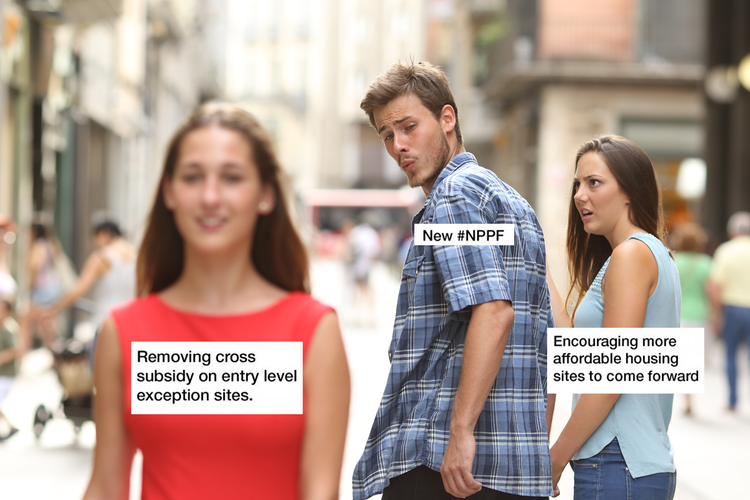Design and the New NPPF

Tibbalds

The final version of the new NPPF was published last week with, perhaps, less fanfare than the original ‘planning reboot’ attracted in 2012. Nevertheless, there are interesting revisions in respect of the treatment and role of design in planning and decision-making. Matt Shillito, Director at Tibbalds, explores some of the ramifications.
Reaction to the new NPPF has been mixed – many in the industry questioning the need for more planning changes and others resorting to memes to share their reaction.
Actually, I thought the tone on design was more positive, proactive and instructive, and less suggestive than the 2012 version.
An NPPF that recognises the centrality of design to sustainable development and promotes finely-tuned design policies rooted in an understanding of place is surely to be welcomed. How this ambition holds up against a shortage of design skills in local authorities and growing pressure to deliver unprecedented levels of housebuilding will be a key test in the months and years to come.
So much of planning policy treats design as, at best, a test to be passed or at worst a liability to be mitigated. The NPPF is a welcome step forward but it would have done well to focus more on the role that good design can play in unlocking challenging sites and overcoming NIMBYISM. If quantity is not to be achieved at the expense of quality, investing in thoughtful design will be more important than ever given the government’s goal of delivering 300K homes per year.
The new NPPF does tackle one of the perennial tensions in the planning process with a notable addition to one of its six key design objectives: whilst it still encourages decision-makers to make sure that new developments are sympathetic to local character, it places new emphasis on the need to embrace innovation, change and increased densities.
The importance of early and open engagement on design matters is also a key message. We know that engaging early can build support, reduce risk and often saves time in the long run. Rather than obstacles to be avoided, when used in the right spirit tools such as workshops, charrettes, and Building for Life Assessments can be great ways to smooth a fractious planning process and achieve better place-making … and can ultimately leading to higher commercial values.
It would be great to go further and explicitly recognise the role that new technologies can play in engaging communities on what places will look like and how they will be experienced, especially younger people who can be hard to reach. Many local authorities and applicants are still using the techniques of 20 years ago, which is such a missed opportunity given the range of tools and technologies now available – although maybe you don’t need to go as far as a meme to get the message across.
Related Updates
Stay In Touch
Sign up to our Newsletter
Subscribe to our newsletter to receive updates about making people friendly places.


